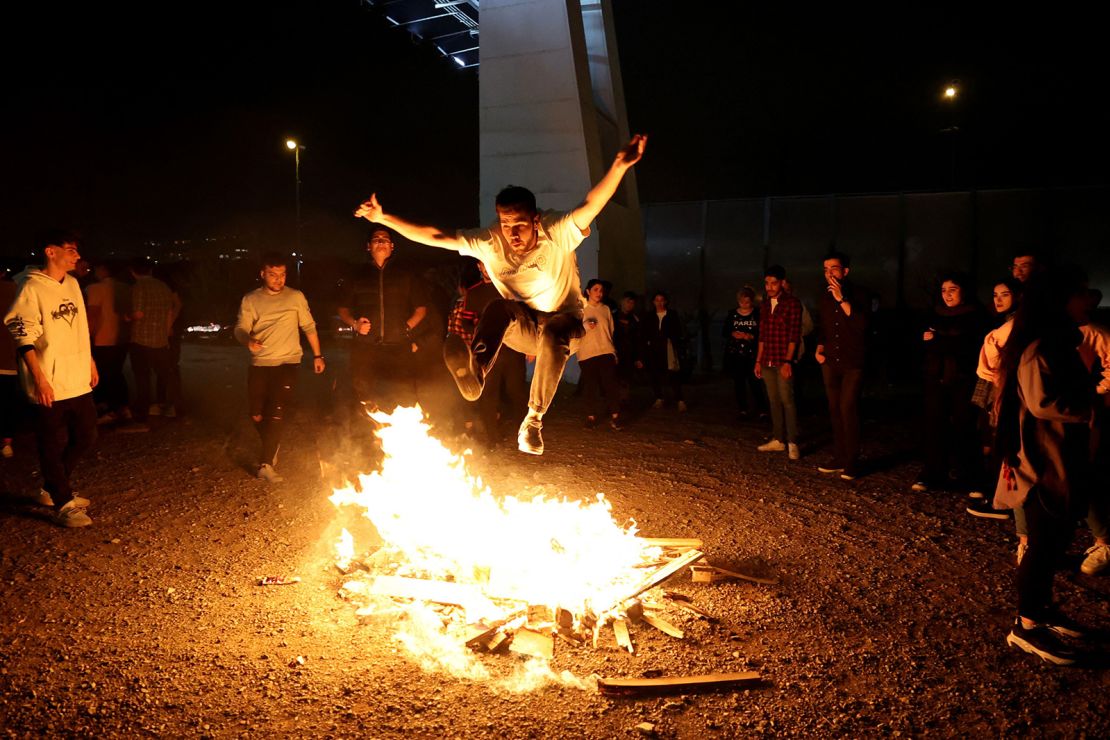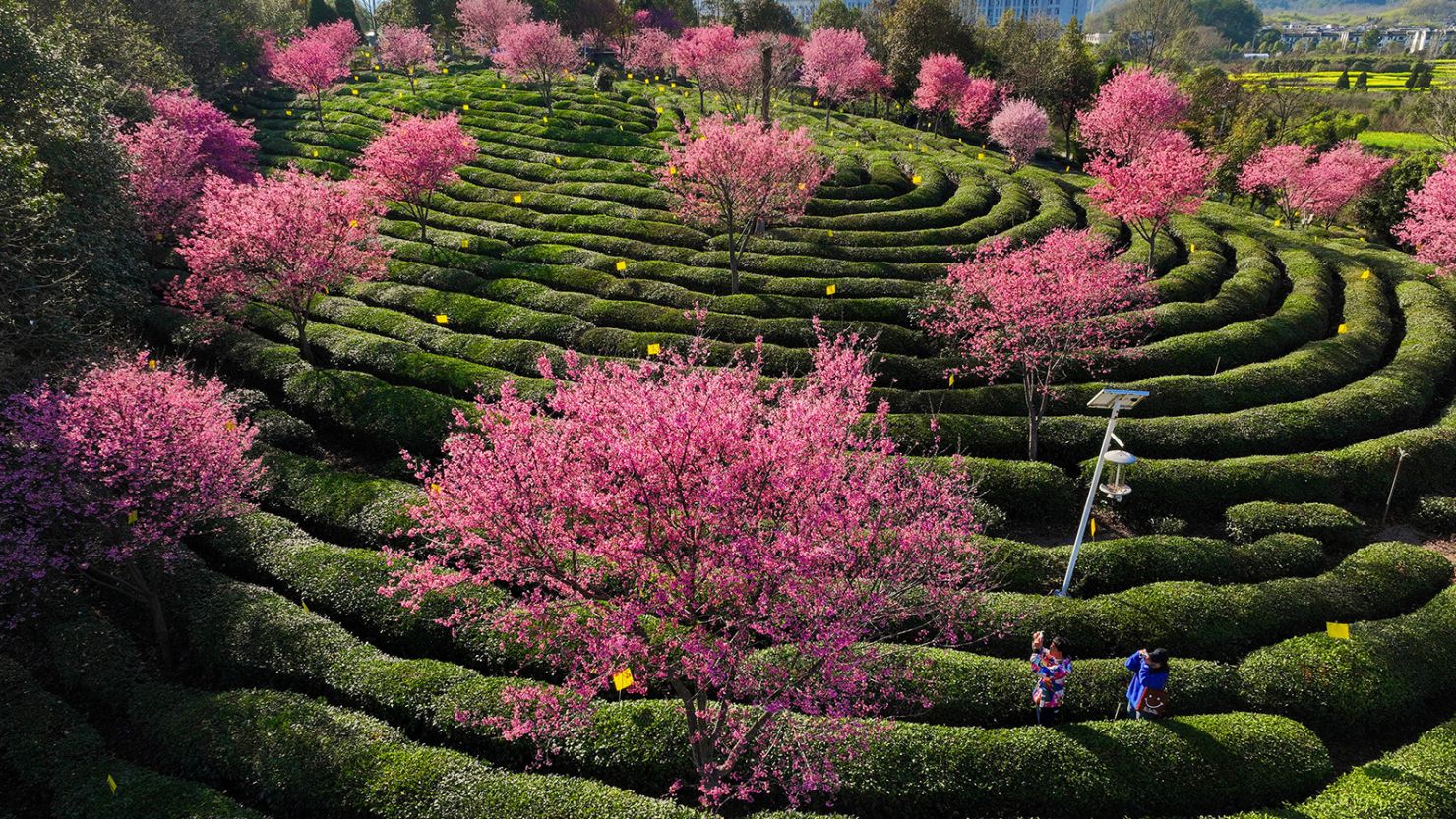Editor’s Note: Monthly Ticket is a CNN Travel series that spotlights some of the most fascinating topics in the travel world. In March, we’re heading to the great outdoors.
Thomas Nashe, the 16th-century British poet and dramatist, certainly looked forward to spring in his own colorful, singsong way:
The fields breathe sweet, the daisies kiss our feet,
Young lovers meet, old wives a-sunning sit,
In every street these tunes our ears do greet:
Cuckoo, jug-jug, pu-we, to witta-woo!
Spring, the sweet spring!
Sweet spring indeed – a time to observe the growing light, listen to the birds, smell the flowers and feel the growing warmth from the sun.
They’re all signs that spring equinox 2023 is arriving. This official first day of spring in the Northern Hemisphere is a sign of rebirth, a time of tradition and a harmonious balance between day and night.
Precisely when will the spring equinox happen?
Some folks like things scheduled down to the minute.
The spring equinox will arrive exactly at 21:24 UTC (Coordinated Universal Time) March 20, according to EarthSky. Here’s how that breaks down at various points around the world (all times adjusted for Daylight Saving Time):
• Honolulu (Hawaii): 11:24 a.m.
• San Francisco (California) and Victoria (Canada): 2:24 p.m.
• Santa Fe (New Mexico) and Guadalajara (Mexico): 3:24 p.m.
• Minneapolis (Minnesota) and Kingston (Jamaica): 4:24 p.m.
• Montreal (Canada) and Charleston (South Carolina): 5:24 p.m.
• Halifax (Canada): 6:24 p.m.
Crossing over the Atlantic, here are some more places:
• Dublin (Ireland) and Accra (Ghana): 9:24 p.m.
• Paris (France) and Algiers (Algeria): 10:24 p.m.
• Helsinki (Finland) and Alexandria (Egypt): 11:24 p.m.

For time zones east of the above, the equinox actually falls on Tuesday, March 21. Some more places:
• Istanbul (Turkey) and Addis Ababa (Ethiopia): 12:24 a.m.
• Dubai (United Arab Emirates): 1:24 a.m.
• Mumbai (India): 2:54 a.m.
• Bangkok (Thailand) and Hanoi (Vietnam): 4:24 a.m.
• Singapore: 5:24 a.m.
• Seoul (South Korea) and Osaka (Japan): 6:24 a.m.
You can click here to see a listing of major cities. Or click here to look up the exact moment of the spring equinox where you live.
For some, fall is in the air

Folks in the Northern Hemisphere are looking forward to longer days, flowers and a burst of greenery. But for people living south of the equator, this equinox means they are heading into fall.
So for Chileans, South Africans and Australians, among others, this is a time to look forward to cooler autumn weather.
For people who reside near the equator (in places such as Quito, Ecuador, or Singapore), none of this is really a big deal. They get roughly 12 hours of daylight and nighttime year round.
Spring equinox has another name
If you ever hear anyone say “vernal equinox,” it means the same thing.
The term equinox comes from the Latin word “equinoxium,” meaning “equality between day and night.” And vernal also comes from Latin and means “spring.”
Why does spring equinox happen?
The Earth rotates along an imaginary line that runs from North Pole to South Pole. It’s called the axis, and this rotation is what gives us day and night.
However, the axis tilts at 23.5 degrees, as NASA explains. That positions one hemisphere of the planet to get more sunlight than the other for half of the year’s orbit around the sun. This discrepancy in sunlight is what triggers the seasons.
The effect is at its maximum in late June and late December. Those are the solstices, and they have the most extreme differences between day and night, especially near the poles. (That’s why it stays dark for so long each day during the winter in places such as Scandinavia and Alaska.)
But since the winter solstice three months ago in December, you’ve probably noticed that our days have been getting longer in the Northern Hemisphere and the nights shorter. And now here we are at the spring equinox!
Going forward, the Northern Hemisphere will be more exposed to the sun than the Southern Hemisphere. That’s why it gets increasingly warmer as we head toward the summer solstice in June.
The equinoxes aren’t exactly ‘equal’

It turns out you actually get a little more daylight than darkness on the equinox – and how much so depends where you are on the planet.
How does that happen when it’s supposed to be 12 hours of day and 12 hours night?
As the US National Weather Service explains, the “nearly” equal hours of day and night are because of the complex way a sunrise is measured and the refraction of sunlight in our atmosphere.
This bending of light rays “causes the sun to appear above the horizon when the actual position of the sun is below the horizon.” The day is a bit longer at higher latitudes than at the equator because it takes the sun longer to rise and set the closer you get to the poles.
We got that truly equal day/night split a few days before the official spring equinox. That’s called the equilux.
Get oriented
If you’re a sky watcher, the website EarthSky points out the equinoxes – spring or autumn – are a superb time to orient yourself. The equinoxes are the only two times a year the sun rises due east and sets due west for everyone on the planet.
EarthSky says the equinox is “a good day for finding east and west from your yard or other favorite site for watching the sky. Just go outside around sunset or sunrise and notice the location of the sun on the horizon with respect to familiar landmarks.”
Another fun fact: The sun sets faster during the equinoxes than during solstices – and it’s true for both hemispheres. The reason? The setting sun hits the horizon at the steepest possible angle to Earth, EarthSky says.
The sun sets more slowly during solstices when the Earth’s tilt is most extreme. And the effect is more dramatic the farther you get from the equator. That’s why the sun never sets at all in the Arctic Circle during the time around the summer solstice.
Special sites and modern celebrations

In England, the mysterious stone structure of Stonehenge has been a popular gathering place for solstices and equinoxes. English Heritage organizes the events, and if you aren’t fond of big crowds, the equinoxes draw fewer people than the solstices typically.
In Mexico, the Mayan site Chichén Itzá has special equinox ties. At the site, the impressive pyramid known as El Castillo was aligned so that a shadow outlining the form of a snake of light (Kukulcán) descends the steps on the equinoxes.
And it’s not just well-known ancient sites that traditionally get in on the action.
Pike Place Market in Seattle will be celebrating its annual Daffodil Day. When shoppers visit the market, they will get a free bundle of daffodils while supplies last.
The city of Zenica, northwest of Sarajevo in Bosnia and Herzegovina, holds its annual Cimburijada or “Festival of Scrambled Eggs” on the first day of spring.
Cultural influences

Cultures around the world celebrate the equinox. Here are a few:
Nowruz is the Persian New Year. Also known as Nauryz, Navruz or Nowrouz, it means “new day.”
It’s no coincidence it falls on the first day of spring. The Iranian calendar is a solar calendar, meaning time is determined, through astronomical observations, by Earth’s movement around the sun. So, the first day of the year always kicks off with the vernal equinox.
It’s a celebration of new beginnings: wishing prosperity and welcoming the future while shedding away the past. That’s why families use this time to deep clean their homes and closets and buy fresh clothing.
In China, trying to stand an egg upright is a popular game during the spring equinox, according to VisitBeijing.com. The custom is thought to go back thousands of years, and it’s believed that if people can get an egg to stand, they will have good luck. And people across China eat local spring vegetables.
In Japan, Vernal Equinox Day is a public holiday (on Tuesday, March 21, this year). Japan is thoroughly modernized, but its people still adhere to old traditions such as visiting family graves and holding family reunions to mark the spring equinox.



